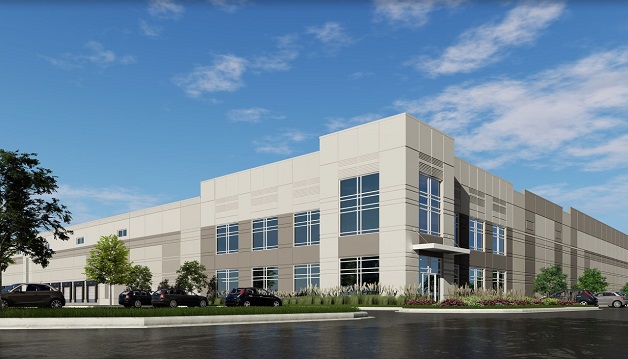
CHICAGO— Despite a slowdown in investment activity, robust leasing activity, low vacancy rates and a healthy balance of supply and demand kept cap rates stable in Chicago-area industrial product over the first half of 2016—according to the latest research from CBRE Group, Inc. Cap rates for class A properties in the Chicago-area sit between 4.75% and 5.5%, down from 2015 and lower than the national average of 5.5%.
A main driver for this is Chicago's historically low vacancy rate—which sits at 3.75% for all class types, according to CBRE Research—and the emergence of new product in core markets that are attracting investors at high price points.
“We have seen what I call 'supercore' product emerge in the Chicago area, which I define as new class A product in infill markets such as I-55 and O'Hare,” says Michael Caprile, vice chairman for CBRE. “For product like this, in areas where available land is scarce, cap rates are sitting at sub 5.”
Furthermore, as class A product continues to thrive, class B and C products are now generating attention from core funds as well.
“In Chicago, we are now seeing core funds and separate accounts target good, functional class B product for cash flow,” says Caprile. “For the B minus and C plus product, we are starting to see equity funds partnering with local buyers to purchase portfolios, further demonstrating the strength of the industrial market across all classes.”
The strength of the Chicago industrial market should persist as demand continues to outpace supply and developers have been more conservative about speculative construction projects in the current cycle.
In the second quarter, CBRE researchers tracked 49 users looking for at least 100,000 square feet in the market, with a cumulative total of 16 million square feet. Looking at the existing supply of class A buildings with at least 100,000 square feet available, they also found that the market offers 57 options, for a total of 14.1 million square feet, falling short to meet current needs.
For tenants looking for at least 500,000 square feet, there are even fewer options. The Chicago industrial market currently has five existing class A buildings with at least 500,000 square feet available for a cumulative total of 3.2 million square feet. But there are currently ten tenants looking for space in this size range with a total need of nearly 8 million square feet, more than twice the available supply.
And through the first half of 2016, there have been 8.6 million square feet in construction starts, divided near evenly between build-to-suit at 47% and speculative projects with 53%.
“These market dynamics should remain for a while and we should see the spread between A and B product decrease,” says Caprile.

CHICAGO— Despite a slowdown in investment activity, robust leasing activity, low vacancy rates and a healthy balance of supply and demand kept cap rates stable in Chicago-area industrial product over the first half of 2016—according to the latest research from
A main driver for this is Chicago's historically low vacancy rate—which sits at 3.75% for all class types, according to CBRE Research—and the emergence of new product in core markets that are attracting investors at high price points.
“We have seen what I call 'supercore' product emerge in the Chicago area, which I define as new class A product in infill markets such as I-55 and O'Hare,” says Michael Caprile, vice chairman for CBRE. “For product like this, in areas where available land is scarce, cap rates are sitting at sub 5.”
Furthermore, as class A product continues to thrive, class B and C products are now generating attention from core funds as well.
“In Chicago, we are now seeing core funds and separate accounts target good, functional class B product for cash flow,” says Caprile. “For the B minus and C plus product, we are starting to see equity funds partnering with local buyers to purchase portfolios, further demonstrating the strength of the industrial market across all classes.”
The strength of the Chicago industrial market should persist as demand continues to outpace supply and developers have been more conservative about speculative construction projects in the current cycle.
In the second quarter, CBRE researchers tracked 49 users looking for at least 100,000 square feet in the market, with a cumulative total of 16 million square feet. Looking at the existing supply of class A buildings with at least 100,000 square feet available, they also found that the market offers 57 options, for a total of 14.1 million square feet, falling short to meet current needs.
For tenants looking for at least 500,000 square feet, there are even fewer options. The Chicago industrial market currently has five existing class A buildings with at least 500,000 square feet available for a cumulative total of 3.2 million square feet. But there are currently ten tenants looking for space in this size range with a total need of nearly 8 million square feet, more than twice the available supply.
And through the first half of 2016, there have been 8.6 million square feet in construction starts, divided near evenly between build-to-suit at 47% and speculative projects with 53%.
“These market dynamics should remain for a while and we should see the spread between A and B product decrease,” says Caprile.
Want to continue reading?
Become a Free ALM Digital Reader.
Once you are an ALM Digital Member, you’ll receive:
- Breaking commercial real estate news and analysis, on-site and via our newsletters and custom alerts
- Educational webcasts, white papers, and ebooks from industry thought leaders
- Critical coverage of the property casualty insurance and financial advisory markets on our other ALM sites, PropertyCasualty360 and ThinkAdvisor
Already have an account? Sign In Now
*May exclude premium content© 2025 ALM Global, LLC, All Rights Reserved. Request academic re-use from www.copyright.com. All other uses, submit a request to [email protected]. For more information visit Asset & Logo Licensing.








